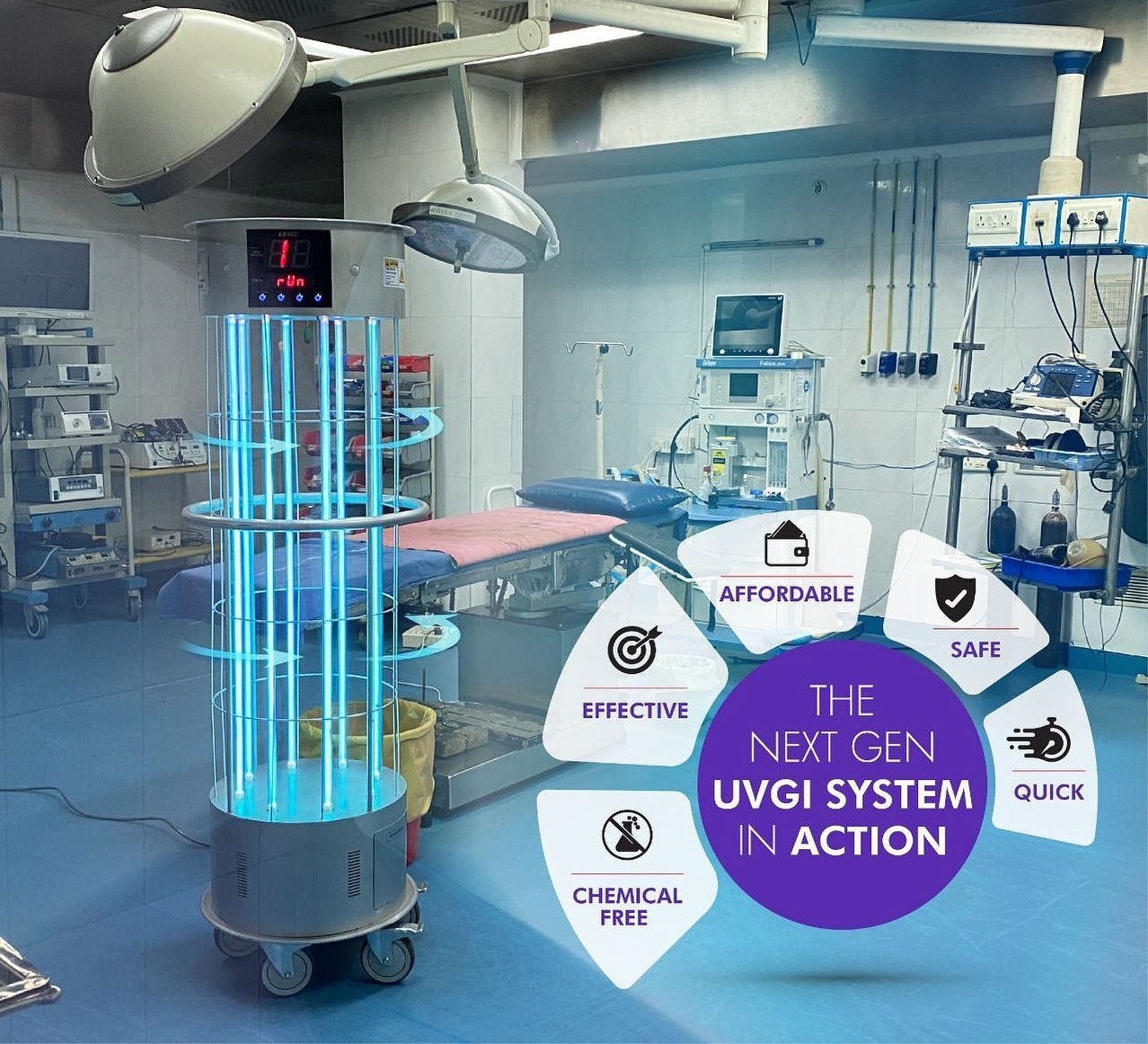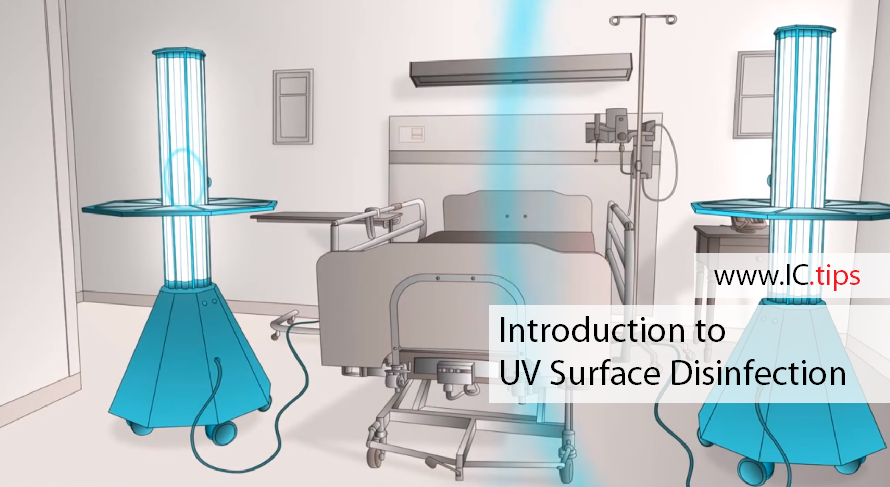Unveiling the Perks of UV Disinfection: Ensuring Disinfected and tidy Areas
While standard cleansing techniques have actually long been relied upon, improvements in modern technology have introduced an innovative remedy that ensures clean and sanitized spaces: UV sanitation. Additionally, we will certainly dive right into the security considerations that should be taken into account when implementing UV sanitation. Prepare to discover a new dimension of cleanliness and discover the untapped possibility of UV disinfection.

The Science Behind UV Sanitation
UV disinfection is a clinically proven method that uses ultraviolet light to remove harmful bacteria from surface areas and water. The scientific research behind UV disinfection hinges on the capacity of UV-C light to damage the DNA and RNA of microorganisms, making them unable to duplicate and creating their eventual death. UV-C light falls within the wavelength variety of 200 to 280 nanometers, which is extremely reliable in ruining bacteria, infections, and various other virus.
When exposed to UV-C light, the genetic material of bacteria absorbs the energy from the light, causing the formation of thymine dimers. These dimers interrupt the regular duplication and transcription procedures of the microbes, hindering their capacity to endure and recreate (uv surface disinfection). The DNA and RNA damage brought on by UV-C light is deadly to the bacteria, making UV disinfection a reliable and dependable method for killing a wide range of microorganisms
UV sanitation is specifically valuable in settings where typical chemical anti-bacterials might be inadequate or unwise. It is a non-chemical method that does not leave any kind of deposits or unsafe byproducts, making it risk-free for use in food processing, medical care centers, water treatment plants, and various other industries. Furthermore, UV sanitation is ecologically friendly, as it does not add to the advancement of antibiotic-resistant bacteria or other unsafe contaminants.
Efficiency of UV Sanitation on Microorganisms
The effectiveness of UV disinfection in removing pathogens has actually been extensively researched and shown in countless scientific researches. UV radiation has the capacity to inactivate a wide variety of microbes, including microorganisms, fungi, and viruses, by damaging their DNA or RNA. This avoids them from replicating and creating infections.
One study published in the American Journal of Infection Control discovered that UV sanitation worked in lowering the presence of several drug-resistant microorganisms in healthcare facility rooms. An additional research conducted by the National Institute for Occupational Security and Wellness showed that UV disinfection was able to remove 99.9% of the flu virus on surfaces.
UV disinfection has additionally revealed guarantee in combating the spread of healthcare-associated infections (HAIs) According to a research released in The Lancet, the usage of UV-C light in addition to common cleansing protocols dramatically lowered the incidence of HAIs in a healthcare facility setup.
Furthermore, UV sanitation has actually confirmed to be effective versus arising virus, such as the severe acute breathing disorder coronavirus 2 (SARS-CoV-2), which triggers COVID-19. A research study carried out by the National Emerging Contagious Illness Laboratories showed that UV-C light can suspend the infection on surfaces within seconds.
Applications of UV Disinfection in Various Settings
With its tried and tested performance in removing virus, UV sanitation has discovered applications in a selection of setups. One of one of the most typical areas where UV sanitation is made use of is in health care facilities. UV technology is used to decontaminate individual spaces, operating rooms, and various other high-touch surface areas, minimizing the danger of healthcare-associated infections. Furthermore, UV disinfection is also being applied in food handling plants and restaurants to ensure the safety and security of food items and protect against the spread of foodborne ailments. UV disinfection is also advantageous in water treatment plants, where it is utilized to kill dangerous bacteria and provide safe drinking water.
An additional essential application of UV sanitation is in the air filtration sector. UV air purifiers are made use of in property, industrial, and industrial setups to eliminate air-borne microorganisms, viruses, and mold and mildew spores. This modern technology is specifically helpful in atmospheres where people are a lot more susceptible to respiratory system infections, such as healthcare facilities, colleges, and office complex.
Moreover, UV disinfection is increasingly being utilized in public transport systems, such as buses and trains, to preserve tidy and sanitized areas for passengers. UV light is utilized to decontaminate surface areas and air inside the vehicles, decreasing the danger of spreading out contagious conditions.
Benefits of UV Sanitation Over Traditional Techniques
In comparison to typical methods, UV disinfection uses an array of distinct advantages that make it a more effective selection in various markets and setups. One substantial benefit is its performance against a broad variety of microorganisms, including bacteria, viruses, and fungi. Unlike chemical anti-bacterials that might have limited effectiveness versus certain pathogens, UV disinfection is a non-selective process that can kill or inactivate a broad spectrum of damaging microorganisms.
Another benefit of UV sanitation is its ability to provide fast and effective disinfection. Conventional disinfection methods frequently require longer get in touch with times or numerous actions to attain the wanted level of disinfection. In comparison, UV light can give continuous and prompt disinfection, minimizing downtime and raising performance in various applications.
UV disinfection likewise uses a secure and environmentally pleasant choice to conventional disinfection techniques. uv surface disinfection. Unlike chemical representatives, UV light does not leave behind any type of harmful deposits or spin-offs, making it suitable for use in sensitive environments such as food handling centers, medical care setups, and water therapy plants
Moreover, learn the facts here now UV sanitation is a cost-effective solution in the long run. While the upfront investment for UV disinfection systems might be greater than typical methods, the functional expenses are typically reduced. UV lights have a lengthy life expectancy and call for marginal maintenance, resulting in minimized labor and replacement prices.
Security Factors To Consider for UV Disinfection
Taking into consideration the potential hazards related to UV sanitation, it is vital to address the safety factors to consider associated with implementing this technology. UV sanitation utilizes ultraviolet light to eliminate or inactivate microbes, making it a reliable method for sanitizing numerous surface areas and objects. It is important to comprehend that UV radiation visit the website can also pose risks to human health if correct safety procedures are not adhered to.
Primarily, direct exposure to UV radiation can cause harm to the skin and eyes. Extended exposure can result in sunburn, skin damage, and also an increased danger of developing skin cancer cells. Therefore, it is vital to ensure that UV sanitation systems are appropriately enclosed and outfitted with safety and security attributes such as automatic shut-off systems or movement sensors to avoid accidental direct exposure.

Additionally, correct training and education are essential for those liable for running UV disinfection systems. They ought to know the prospective hazards, recognize the safety and security procedures, and know how to handle and keep the equipment properly.
Verdict
In verdict, UV disinfection uses various advantages in ensuring clean and sterilized spaces. Its efficiency in getting rid of pathogens has been proven through scientific research. UV sanitation can be used in various settings, consisting of medical care facilities, food handling plants, and water therapy systems. Contrasted to typical techniques, UV disinfection has benefits such as faster disinfection times, minimal chemical usage, and no damaging by-products. Safety and security factors to consider must be considered to avoid prospective threats connected with UV direct exposure.
UV sanitation is a medically tried and tested technique that makes use of ultraviolet light to eliminate hazardous bacteria from surfaces and water. The DNA and RNA damages caused by UV-C light is deadly to the microbes, making UV disinfection a reputable and reliable technique for killing a broad array of virus.
One more advantage of UV sanitation is its capability to offer quick and efficient sanitation. UV disinfection utilizes ultraviolet light to kill or suspend microorganisms, making it an efficient approach for sterilizing different surfaces and items. Contrasted to traditional approaches, UV sanitation has advantages such as look at this site faster disinfection times, minimal chemical usage, and no hazardous byproducts.